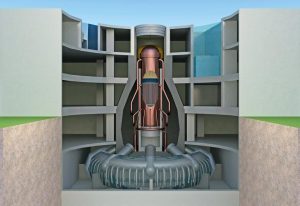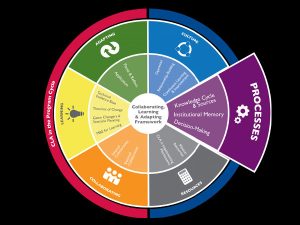Introduction
MSRs operate on fundamentally different principles than traditional water-cooled reactors. They utilize liquid fuel typically a mixture of fluoride or chloride salts containing fissile material circulating through the reactor core at high temperatures. The fuel’s liquid form allows for efficient heat transfer and inherent safety features, making MSRs promising candidates for next-generation nuclear power.
Specific Regulatory Challenges
Novel Technology Assessment: Regulators face the challenge of comprehensively understanding and evaluating this novel technology. Unlike solid-fueled reactors, MSRs involve unique chemistry, materials, and operational characteristics. Establishing safety parameters and performance criteria requires a deep understanding of these unconventional aspects.
Fluid Dynamics and Material Compatibility: MSRs’ use of liquid fuel demands stringent assessments of fluid dynamics and material compatibility. Ensuring the reactor’s structural integrity and preventing corrosion or degradation of materials due to the highly corrosive nature of molten salts poses a significant challenge.
Safety and Containment: Traditional reactors rely on physical barriers, like solid fuel rods, for containment. In MSRs, maintaining fuel in a liquid state necessitates innovative safety strategies. Regulations must ensure effective containment, preventing leaks or runaway reactions in case of power loss or malfunction.
Long-Term Operations and Maintenance: Assessing the long-term operational safety of MSRs requires regulatory frameworks that address ongoing maintenance, fuel replenishment, and waste management, which differ considerably from those of solid-fueled reactors.
Licensing and Approval Processes: MSRs challenge traditional licensing procedures designed for conventional reactors. Regulators must adapt approval processes to encompass the unique aspects of MSR technology, ensuring rigorous safety protocols without impeding innovation.

Contrasting Challenges with Other Reactor Designs
Fuel Complexity: Unlike LWRs that utilize solid fuel assemblies, MSRs operate with a continuous flow of liquid fuel. Regulators must navigate the complexities of handling and regulating the circulation of this liquid fuel, which differs significantly from the established practices in solid-fueled reactors.
Inherent Safety: MSRs boast inherent safety features due to their design, including passive cooling and reduced risk of core meltdown. Contrarily, LWRs require active safety systems for cooling, emphasizing different safety assessment approaches for regulators.
Radioactive Waste Management: The waste produced by MSRs has different characteristics from LWRs. Addressing the unique waste composition and managing its storage, treatment, and disposal necessitates distinct regulatory considerations.

Regulatory Adaptation and Collaboration
To effectively oversee MSR construction, regulators must adapt existing frameworks while fostering collaboration among nuclear scientists, industry experts, and policymakers. Key strategies include:
Specialized Expertise: Regulators need specialized training and collaborations with experts in MSR technology to develop comprehensive regulatory guidelines.
Flexible Regulations: Regulatory frameworks should be adaptable, allowing for iterative improvements as understanding of MSRs evolves.
International Cooperation: Given the global nature of nuclear innovation, international collaboration and knowledge sharing are crucial for establishing consistent safety standards and best practices.

Conclusion
Molten salt reactors represent a transformative leap in nuclear technology, offering inherent safety features and potential advancements in clean energy production. However, regulating these innovative reactors demands a paradigm shift in safety assessment, containment strategies, and operational protocols. Adapting regulatory frameworks to accommodate the unique characteristics of MSRs while ensuring safety and reliability will be pivotal in harnessing the potential of this groundbreaking technology.




